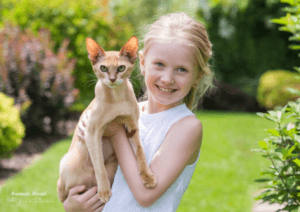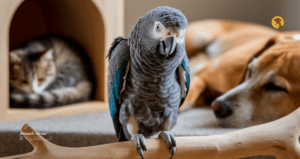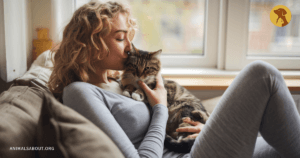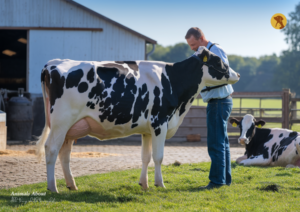The calm of a morning coffee or a quiet afternoon can be suddenly interrupted by the surprising sight of a deer in your backyard. Whether you live near the woods or in the heart of a neighborhood, a visit from a wild deer can feel like a magical encounter—or raise serious questions about safety, plants, and property.
If you’ve found yourself wondering, “Is it safe if a deer is in my yard?”, or searching for tips on how to handle backyard deer, you’re not alone. With deer becoming increasingly comfortable around human spaces, it’s important to know how to manage these unexpected visits while protecting both the animal and your home.
Why Are Deer in Backyard Spaces and Residential Areas?
The sight of wild deer near home is becoming more frequent—and there’s a reason for it. As human development expands into natural areas, deer are losing habitat and adjusting to survive. Parks, gardens, and suburban lawns offer attractive alternatives to wild foraging grounds.
If you’re seeing deer in your backyard, you’re likely providing something that attracts them. This could include:
- Edible plants and flowers
- Fruit trees or vegetable gardens
- Bird feeders with spilled seeds
- Shelter and quiet space
- Water sources like ponds or fountains
With urban sprawl reducing forest cover, many deer now see residential areas as part of their range. To them, your backyard may feel like a safe refuge with plenty to eat.
Is It Dangerous to Have a Deer in Your Backyard?
In general, deer are not aggressive animals. But just like any wildlife, they can become unpredictable—especially when they feel threatened, are injured, or are protecting a fawn.
While a deer encounter can be awe-inspiring, it’s best to keep your distance. Never try to approach or pet a deer, no matter how calm it looks. The safest way to enjoy the moment is to observe from indoors and give the animal space.
If you’ve ever wondered, “Is it safe if a deer is in your yard?”, the answer is: it can be, as long as you stay cautious and respectful of their space.
What to Do When You See a Deer in Your Backyard
So, the moment comes—you look out the window and see a graceful doe or curious buck munching on your shrubs. Here’s a helpful step-by-step guide on what to do when a deer appears in your yard:
1. Observe Deer in Your Backyard Quietly from a Distance
Avoid startling the deer with noise or movement. Watch from inside your house or a safe distance outside. Deer are skittish by nature, and even a small sound can send them running—or cause them to bolt into danger.
2. Keep Children and Pets Inside When Deer Are in the Backyard
Dogs might bark or chase the deer, and small children could unintentionally get too close. Secure your pets indoors and gently explain to children that deer are wild animals that should be observed, not approached.
3. Don’t Feed the Deer
While it may seem kind, feeding wild deer creates dependency and increases the chance of future conflicts. It can also draw more wildlife into your yard. Let nature provide what the deer need without human interference.
4. Allow the Deer Time to Leave
Most deer don’t stay long. They’re likely just passing through or resting briefly. Unless they appear injured or trapped, let them move on naturally without interference.
This gentle approach allows you to enjoy the experience of wildlife in residential areas without creating future problems for you or the deer.
Understanding Backyard Deer Behavior
Deer are crepuscular creatures—most active during early morning and late evening. If you see them often, it’s helpful to learn about backyard deer behavior to better anticipate their actions.
They are:
- Extremely sensitive to scent and sound
- Cautious and quick to flee
- Attracted to soft, lush vegetation
- Known to return to locations where they’ve previously found food
Understanding these behaviors is key to managing unexpected deer visits humanely and effectively.
How to Keep Deer Away from Your Property (Without Harming Them)
If you’re wondering how to keep deer out of your yard, you’re not alone. Many homeowners struggle to balance a love for nature with protecting their gardens. The good news is, there are plenty of non-lethal deer repellents and humane strategies to discourage repeat visits.
1. Deer-Resistant Fencing
One of the most effective barriers against deer is fencing that’s at least 7–8 feet tall. If you’re concerned about aesthetics, there are mesh or electric options that blend well with landscaping.
2. Deer in Backyard Deterrents for Gardens
Use store-bought sprays or homemade solutions with garlic, hot pepper, vinegar, or eggs to create an unpleasant taste and smell for deer. These should be reapplied regularly—especially after rain.
3. Scaring Deer Away Humanely
Try motion-activated sprinklers, solar-powered noise devices, or reflective objects like aluminum pie pans. These are effective for scaring deer away humanely without causing harm.
4. Eliminate Temptations
Pick up fallen fruit, secure trash bins, and stop feeding birds on the ground, as birdseed often attracts deer. Clean up compost piles and remove edible landscaping plants if deer frequent your area.
These methods of backyard wildlife control allow you to maintain a peaceful coexistence without resorting to harmful tactics.
Preventing Deer in Backyard Damage to Plants
One of the most frustrating aspects of wild animal encounters is the trail of destruction deer can leave behind. They can eat roses, tulips, hostas, and even chew the bark off young trees.
To prevent deer damage to plants, consider these additional strategies:
- Surround prized plants with physical barriers
- Use deer-resistant plant species like lavender, sage, peonies, and boxwood
- Add texture to your garden—deer dislike fuzzy, prickly, or fragrant foliage
- Rotate deterrents frequently to keep deer guessing
Gardeners and nature lovers alike can find peace of mind knowing that their landscapes don’t have to suffer from deer in the backyard.
When to Call a Wildlife Agency for Help
Sometimes, responding to deer on your property requires more than just home solutions. You should contact a wildlife agency for deer assistance if:
- The deer seems injured or limping
- A fawn is alone for over 24 hours (its mother may be gone)
- The deer appears sick, confused, or overly tame
- The animal is trapped in a fenced or enclosed area
Your local wildlife authorities can guide you on what’s best for the deer—and for your family’s safety. Prompt action ensures ethical treatment and prevents accidents or prolonged suffering.
Living with Deer in Backyard Urban Areas
While deer have traditionally lived in forests, deer in urban areas are now a regular part of the modern landscape. Parks, neighborhoods, and even small city gardens can become temporary homes for deer.
This shift creates a responsibility for all of us: to coexist with wildlife in our gardens and yards rather than control it.
Respect Nature and Protect Your Space
Whether it’s a one-time visit or a frequent occurrence, seeing a deer in your backyard is a reminder of how interconnected we are with nature. These gentle creatures aren’t intruders—they’re survivors adapting to a human-dominated world.
With a little preparation and understanding, you can:
- Enjoy the wonder of wild deer sightings
- Keep your family and pets safe
- Protect your yard from damage
- Prevent future deer encounters through humane means
Managing deer in your yard doesn’t mean scaring them away forever. It means learning how to live in respectful balance with the natural world.
FAQ
Leave it be! The mother is usually nearby and will return. Only call a wildlife agency if it remains alone for more than 24 hours.
Yes. A mix of garlic, chili powder, or rotten eggs can deter deer. Reapply after rain for best results.
Deer are generally not dangerous but may become defensive if threatened or startled. Always keep your distance.
Disclaimer: This content is for informational purposes only. If a wild animal poses a risk to safety, contact your local wildlife agency or animal control for professional help.







